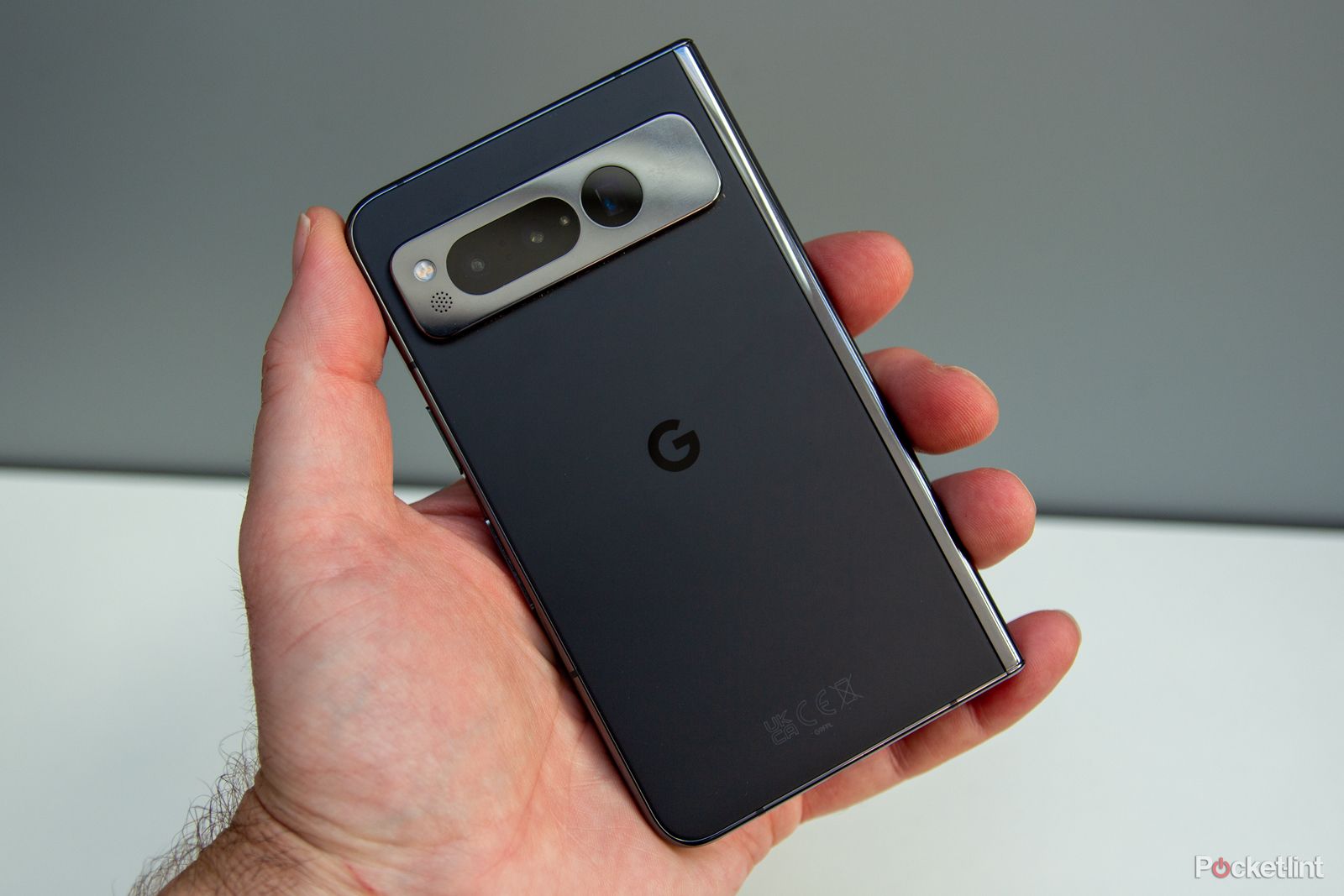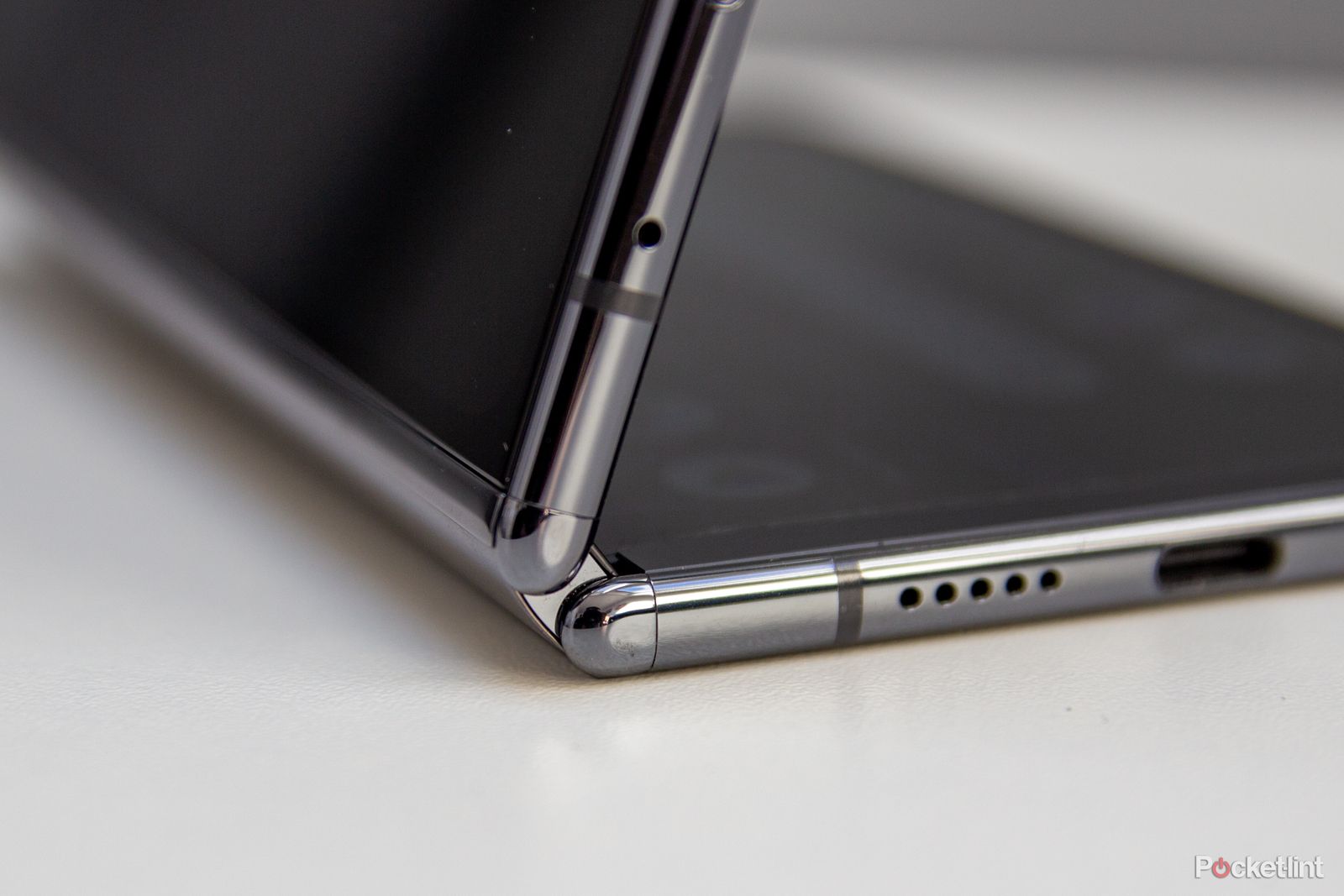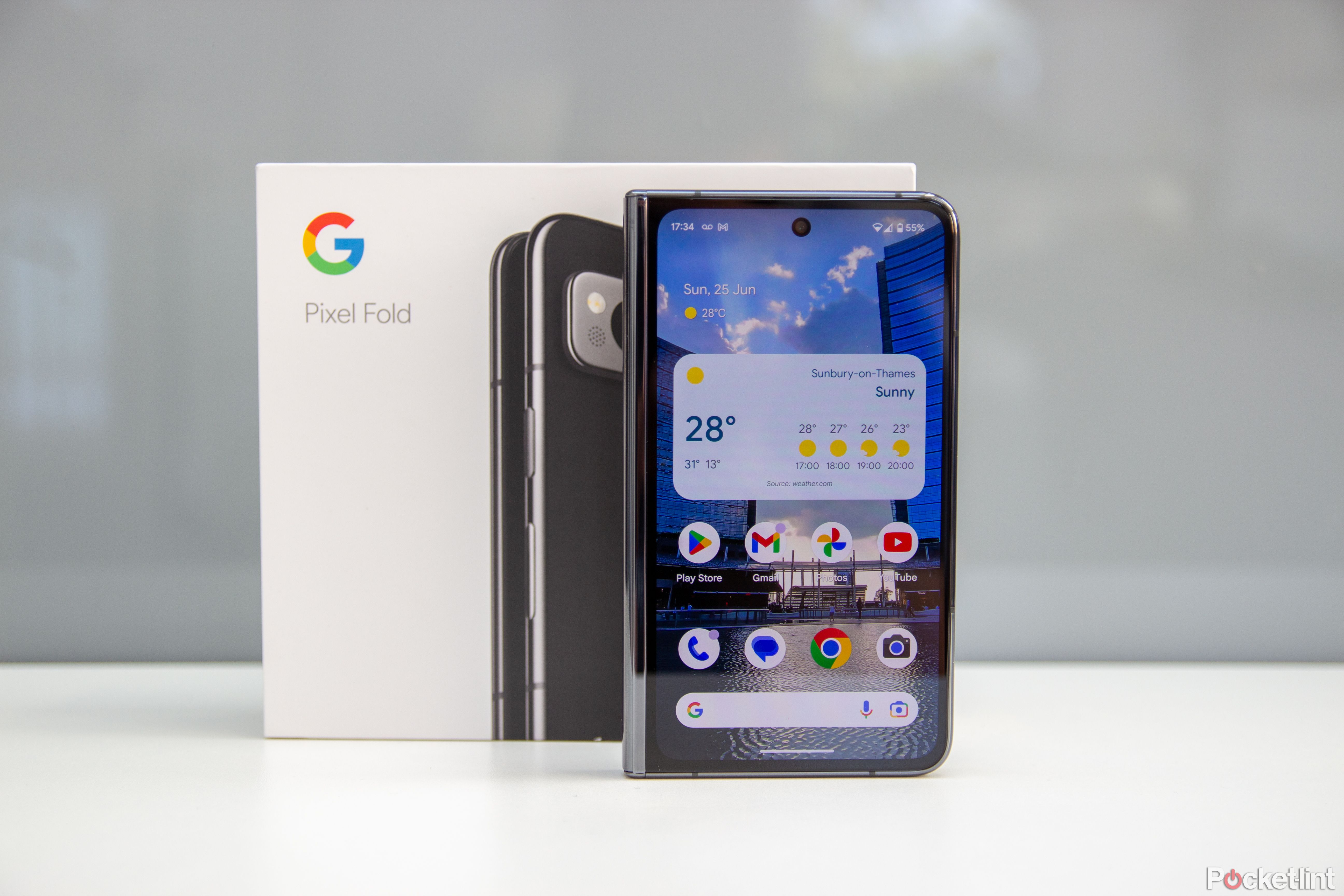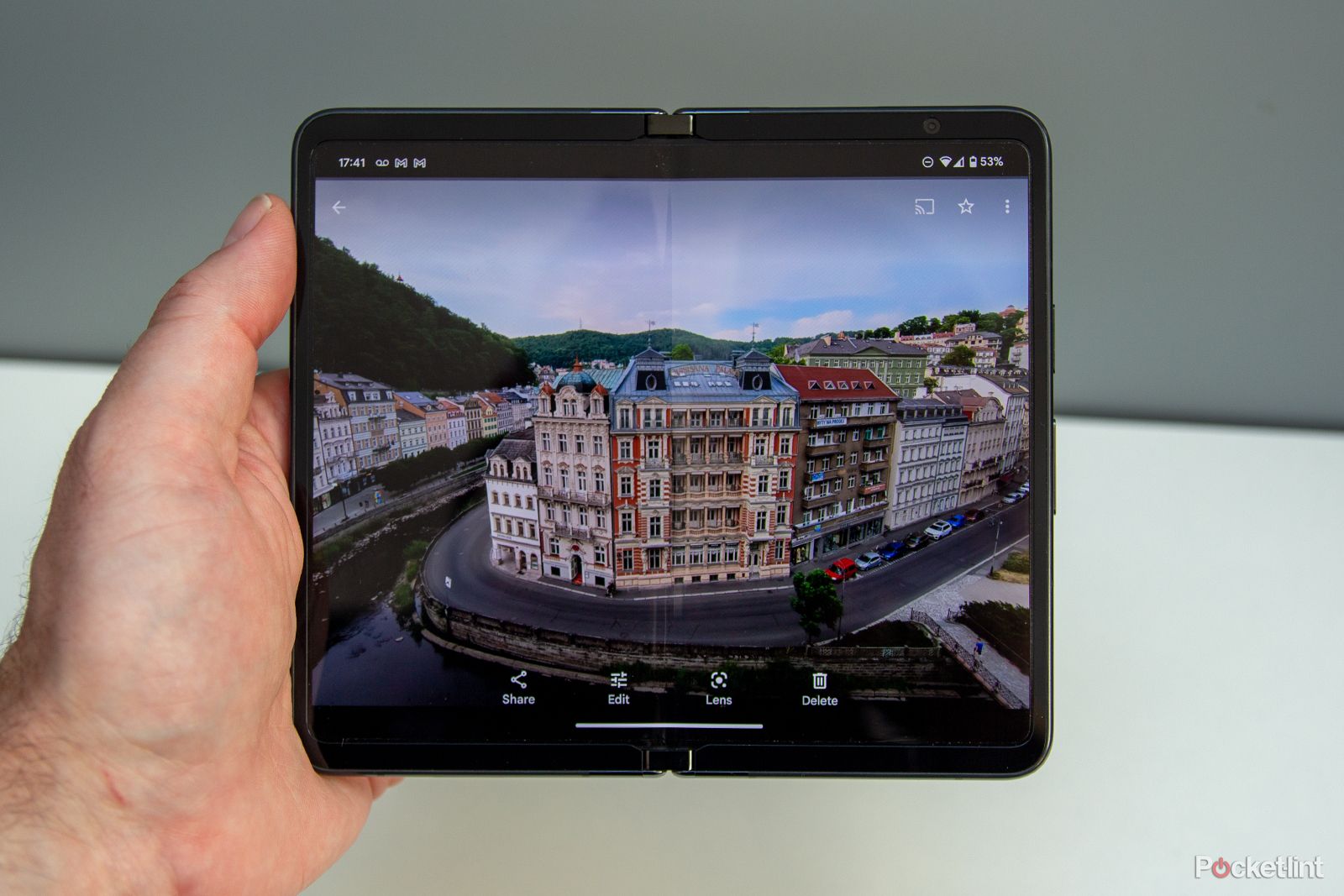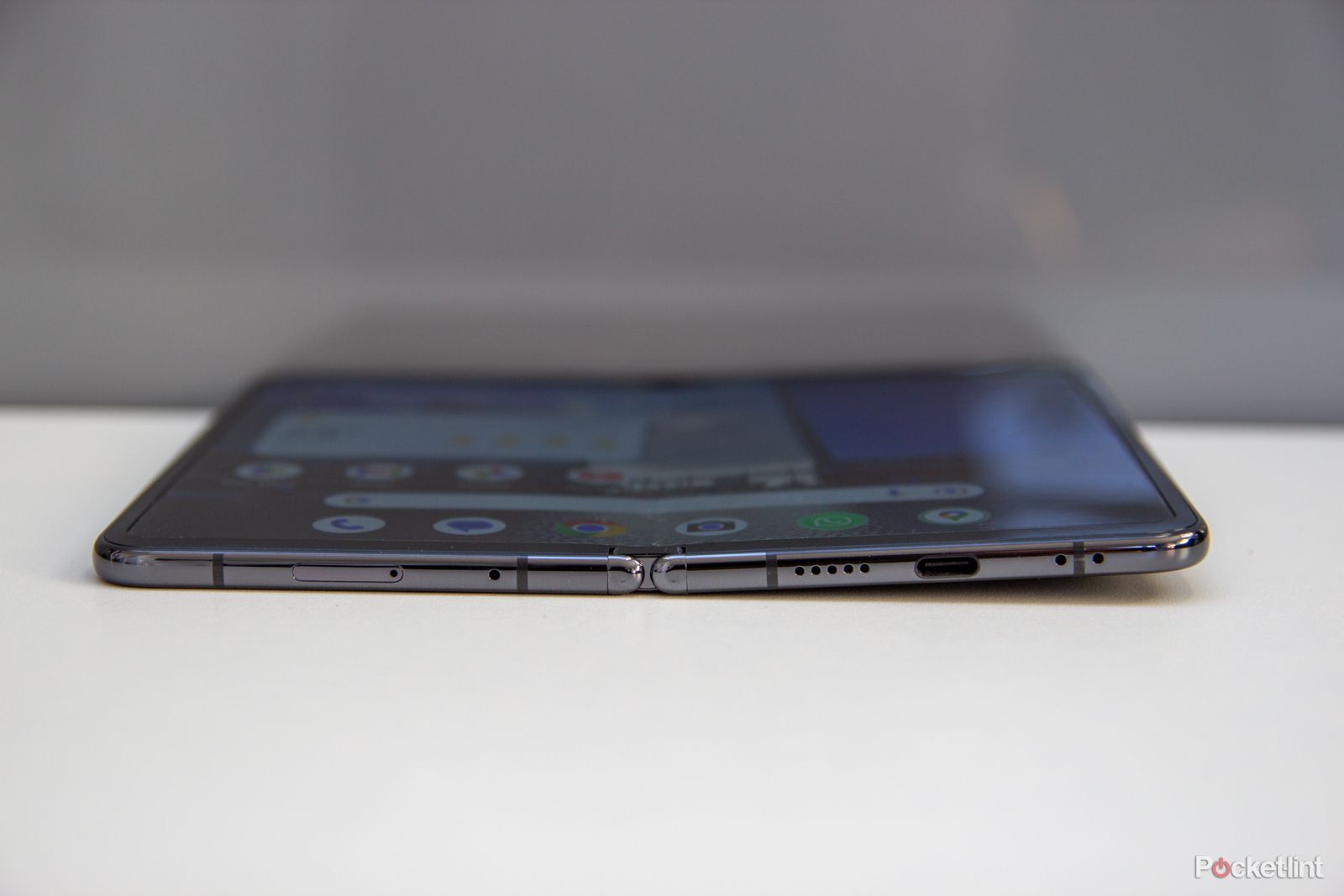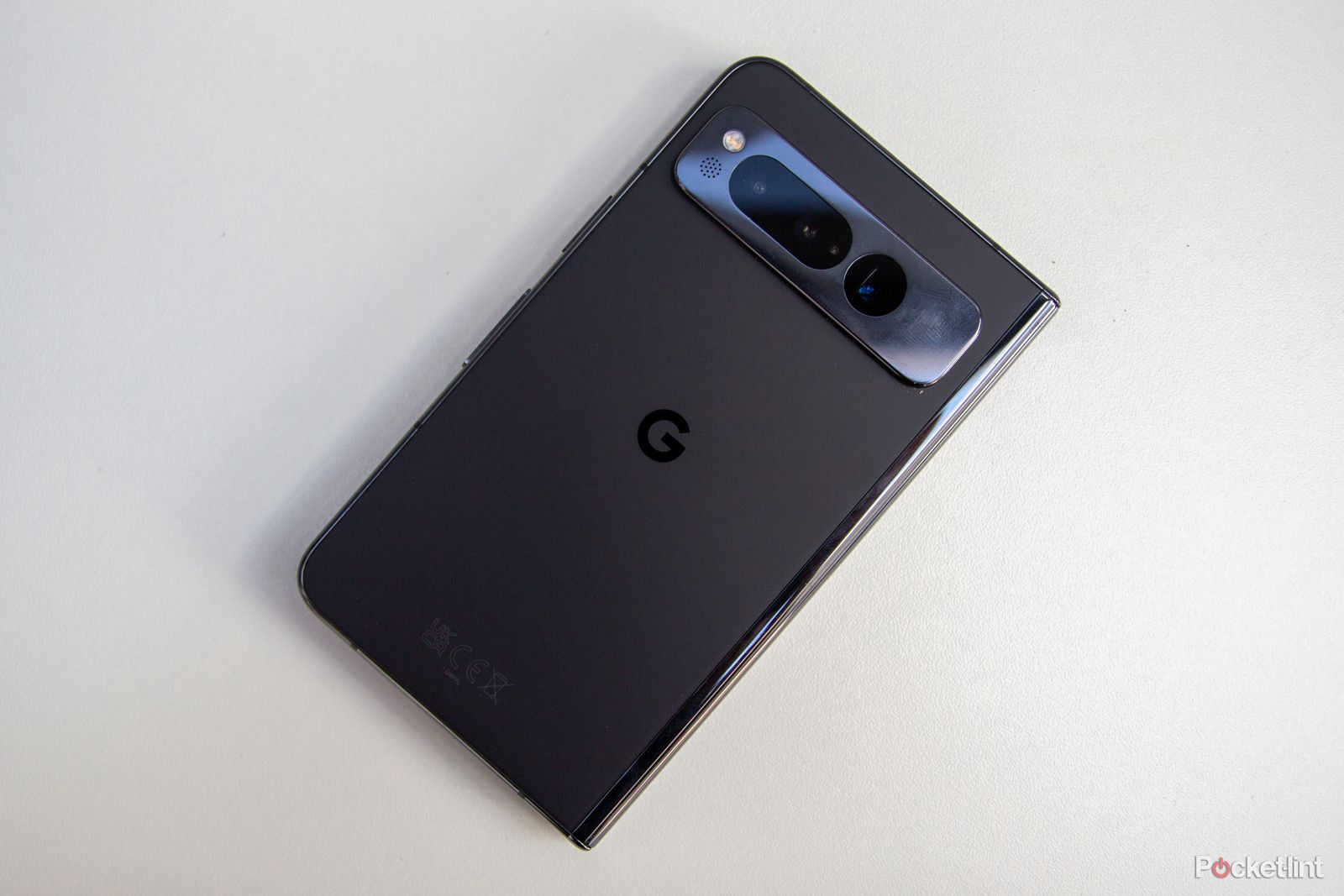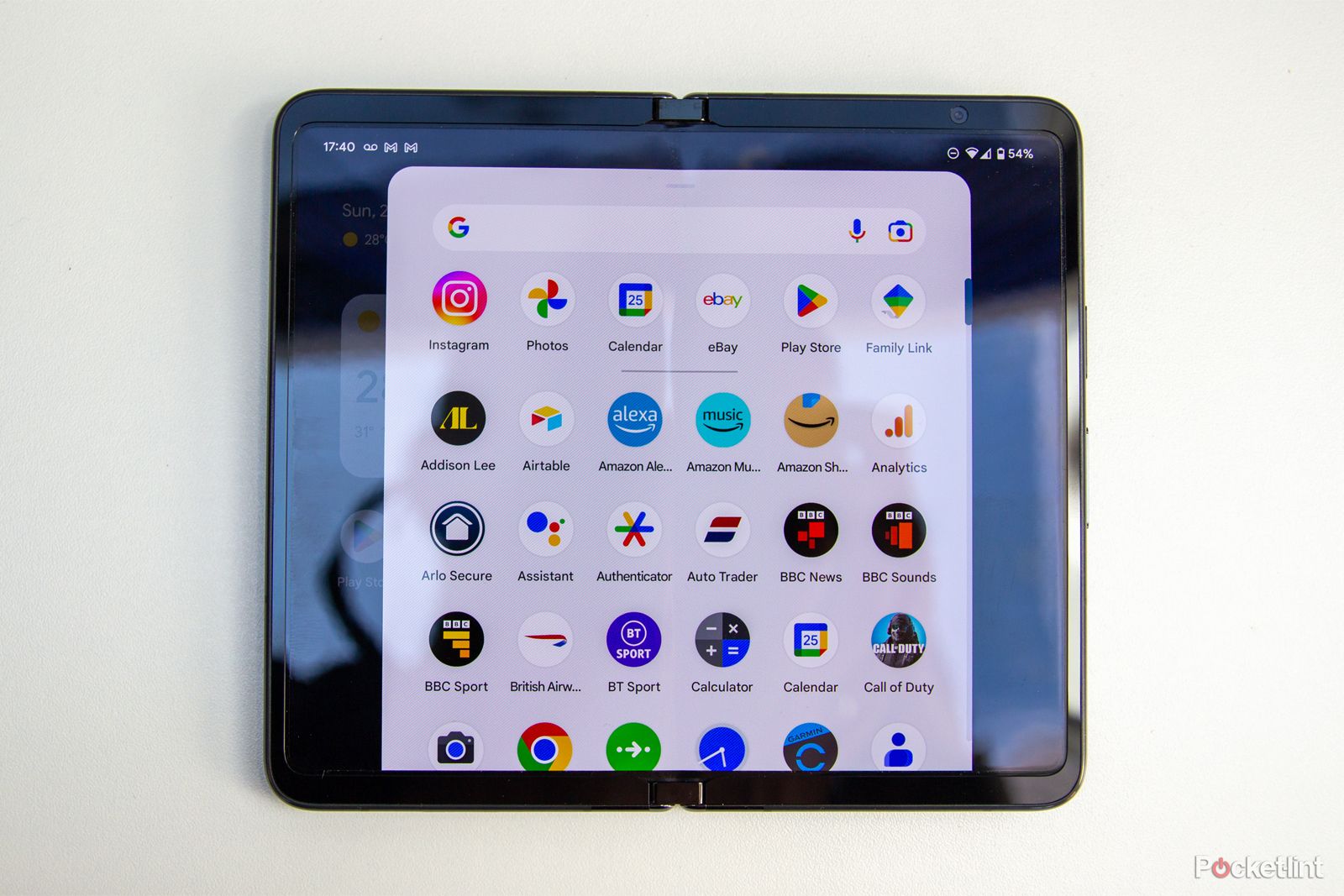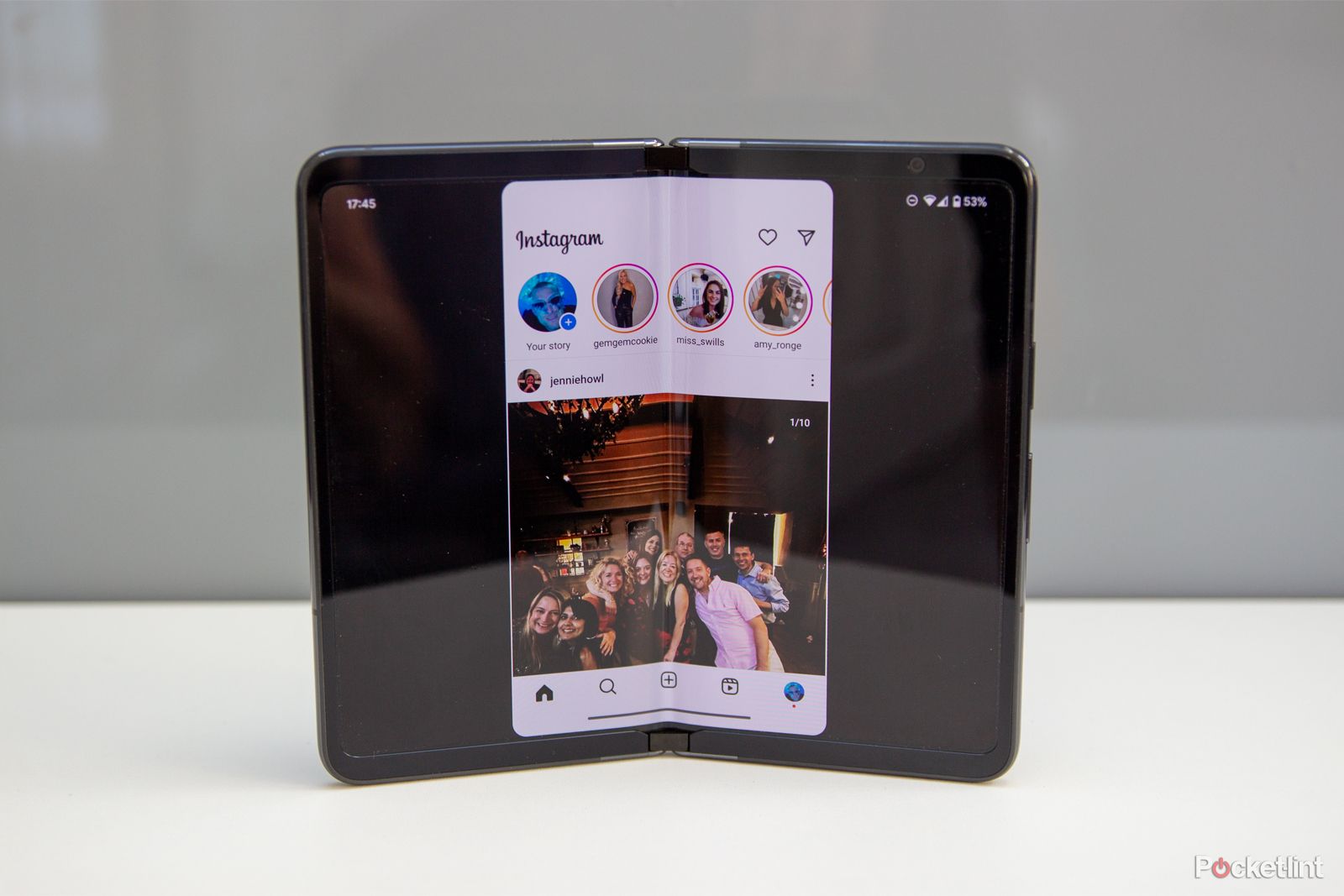Google hasn’t been making phones for long. Not compared to the likes of Samsung or Apple. While Apple is preparing to launch the iPhone 15 and Samsung preparing its fifth-generation of folding phone, Google has launched its first folding phone and only its eighth generation of smartphone.
This is Google embracing a change, showing what it can do on a larger screen and how it can drive Android in a new direction. That started with the Pixel Tablet – and it’s clear there’s work to do there – and the Pixel Fold offers many of the same features.
I’ve lived with the Pixel Fold for a couple of weeks, is this the folding phone for you?
Google Pixel Fold
The Pixel Fold takes Google’s phones in a new direction, embracing the next-gen screen tech and presenting a premium PIxel option. It’s a great quality phone, but it’s clear there’s still work to be done on app optimisation to enhance the experience.
- Great quality design
- External display is very usable
- Great camera results
- Some software optimisation still to happen
- It’s expensive
- Middling battery life
Design and build
- Folded: 139.7 x 79.5 x 12.1mm
- Unfolded: 139.7 x 158.7 x 5.8mm
- 283g, IPX8 protection
- Gorilla Glass Victus, polished aluminium frame
There’s a whopping price tag on the Pixel Fold. It will cost $1799 in the US or £1749 in the UK. In Europe, it’s €1899 so there’s no avoiding that this is a premium phone. Fortunately, it comes with a premium build, but this is a device where cost is always going to be part of the conversation. (As it happens, there are trade-in offers and a free Pixel Watch with pre-orders on the Google Store, and that might lessen the blow for you.)
But as soon as you lift the Pixel Fold from the box you’ll be struck by how premium it is. The 283g weight means there’s some heft to it, the polished aluminium frame looks and feels great, softly rounded to make it a pleasure to hold. This phone might be 12.1mm thick, but it’s comfortable to grip when folded, if a little weighty – it is 20g heavier than Samsung’s rival flagship phone.
The looks are similar to the Pixel 7 Pro, it’s the same quality of finish, but there’s more frame to the Pixel Fold, the spine formed when the phone is folded is again a seamless, with a high-quality finish to the steel alloy, while the Gorilla Glass Victus back of this phone is matte rather than gloss, so it doesn’t collect fingerprints.
In folding phones, a lot is said about hinges, and Google has made a great hinge. The Pixel Fold when closed doesn’t leave a gap like you get on the Samsung Galaxy Z Fold 4, instead it’s almost – almost – flush, with the two halves of the phone laying flat against each other. Hold it up to the light, however, and you’ll find there’s still a gap at the hinge end, a little light creeping through.
Open the phone and that hinge doesn’t leave gaps, it all looks well sealed, but the phone doesn’t actually open flat. There’s a sizeable camera bump on the rear and when open, the phone isn’t a flat slab, the right leaf is at a slight angle. Lay the phone on a table and you’ll see it, pick it up and find that’s as far as it goes.
The Pixel Fold carries an IPX8 rating, meaning it will withstand water ingress, but it’s not tested for dust. Dust and fine grains will always be a problem for devices with hinges – we’d advise you take real care if you’re heading to the beach. Of course, on a phone this expensive, you’ll want a case, and there is a selection available. Even after a few weeks, we’ve found a line of dust in the centre of the display down the crease.
The whole essence of the Pixel Fold, however, is one that continues the Pixel story. It fits right in with what the Pixel 7 devices offer, instantly recognisable as part of the pack.
One of the changes, however, is that the fingerprint scanner is in the power button. That’s a common move on folding phones and it works well enough. In the time we’ve been using it, we’ve had no problems with it. The Pixel Fold also supports face unlocking, and this will get you into the device easily enough, but only unlocks using the front camera when the phone is folded. It’s perhaps not as advantageous as it is on a regular phone, because many will press to power button to wake the screen and the fingerprint is often seamlessly recognised and the phone unlocked anyway.
Pixel Fold displays
- Internal: 7.6in OLED, 2208 x 1840, 380ppi, 120Hz, 1450 nits peak, 6:5 aspect
- External: 5.8in OLED, 2092 x 1080, 408ppi, 120Hz, 1550 nits peak, 17.4:9 aspect
Every folding phone is a tale of two displays. There’s the fancy folding display on the inside, using ultra-thin glass to allow it to sit at various angles and often the centre of attention, and then there’s the external display. Often seen as a place to quickly glance at messages, the Pixel Fold’s external display is so much more than that. I’ve opined on how much I like it right here, because I’ve found myself using the external display a lot.
The aspect ratio of it is really good, because it’s wide enough to use like a normal phone. There’s enough space to use the keyboard on all my regular apps, without feeling like there’s a compromise to performance. It’s not huge, but it is like having another compact phone in your pocket. It’s bright, it’s vibrant, and it’s a full-functioning phone display, with 120Hz refresh rate and great peak brightness to cut through reflections on sunny days – and I think it’s a major selling point for the Pixel Fold.
Open the phone up and you’re presented with the 7.6-inch folding screen. The first thing that people will comment on is the bezels. They’re wide but uniform, forming a border around the folding display, but also serving the purpose of making sure that when the two sides of this phone are folded together, it’s the bezel that touches, not the screen.
There is a seam down the middle. That’s noticeable when the screen is off, but as soon as you’re using it, you can’t really see it – it just blends into the background. Yes, you’ll feel it when you run your finger over it, but that’s the same with all folding phones. Importantly, fire up a movie on Netflix to enjoy across that 7.6-inch display, and you won’t notice the fold in the middle of the page at all. There’s a factory-installed protective layer over the display and this absolutely cannot be removed – and you can’t add other screen protectors. There’s also about a 1mm gutter around the very edge of the display that isn’t covered by this protector, so could be extremely delicate. Exactly how well this will survive over time, as just don’t know at the time of writing.
One thing I’ve noticed about the internal display is that the viewing angles aren’t quite as solid as the external display. It will dim a little if you’re viewing from an angle. You might also find it looks a little defracted if you’re wearing polarised sunglasses and viewing the internal display in portrait, due to the orientation of the polarising layer on the top of the screen. Yes, that’s a lot of conditions, but if you wear polarised sunglasses like I do, you need to be prepared for it.
What’s common to both the displays, however, is quality. They are both vibrant and the peak brightness they offer helps to drive the HDR experience for entertainment, while also fending off bright sunshine. I’ve found both the displays to perform well in all conditions in terms of vibrancy, colour and brightness – certainly, from a performance point of view, I have nothing to complain about when it comes to the display.
Pixel Fold hardware and battery performance
- Google Tensor G2, 12GB RAM, 256/512GB storage
- 4821mAh, 21W wired, 7.5W wireless
The Google Pixel Fold lands with familiar hardware, because it’s the same as you get in the Pixel 7 Pro, and closely related to the Pixel Tablet and even the Pixel 7a. Google’s approach is to essentially use the same hardware across its devices, and that means the performance is going to be close to its flagship phone. Having used the folding phone for a couple of weeks, the experience is pretty close to that which I’ve experienced using the Pixel 7 Pro as my daily driver. You can see how the two compare here.
Firing up Call of Duty Mobile to put some stress on the system sees the gaming running nice and smoothly – and graphically, that’s a game that looks amazing on this larger display, although in reality, it’s harder to control what you’re doing and we’d say that folding phones aren’t the best for gaming. When gaming, or using loads of apps to multitask, I’ve found the Pixel Fold to stay cool enough, but when using the hotspot it is prone to getting pretty hot – especially if charging at the same time.
Google phones aren’t known for their battery performance – the Pixel 7 Pro isn’t the best when it comes to straight stamina and the Pixel Fold feels the same. It will get through a typical day, although we’ve found it is ready to be recharged at the end of each day. You’re not left thinking you can get through a weekend with this phone, it just doesn’t have the stamina.
Similarly, the 21W charging it offers isn’t fast – although Samsung only offers 25W charging – while the wired charging of 7.5W is also pretty average – Samsung here is 10W on the Z Fold 4. That’s now pretty slow, when 68W, 100W, 120W charging is appearing elsewhere. This might come down to trying to preserve the battery, or limitations caused by the split battery design that folding phones use. But the Oppo Find N2 has 67W charging, so it’s not unheard of in this market. The Pixel Fold doesn’t come with a charger, so you’ll want the right model to get the best out of your new device.
Overall, however, the performance is that of a flagship device. It doesn’t feel like you have to compromise with this device, it’s ready to support your multitasking, and being able to open up Chrome and view the desktop version of a website is a real advantage over a traditional candybar phone.
Pixel Fold camera performance
- Main (rear): 48MP, 0.8µm, f/1.7, 1/2in sensor
- Ultrawide (rear): 10.8MP, 1.25µm, f/2.2, 1/3in sensor, 121.1 degrees
- Telephoto (rear): 10.8MP, 1.22µm, f/3.05, 1/3.1in sensor, 5x optical
- Front: 9.5MP, 1.22µm, f/2.2, FF
- Inner: 8MP, 1.12 µm, f/2.0, FF
Folding phones have a lot of cameras, a by-product of having a lot of different sides. The aim has always been to ensure there’s a camera on whichever surface you’re looking at. Looking at the breakdown of cameras, this looks like a cascading list, from best to worst. The inner camera being the camera that you’re least likely to use – and generally pitched at video calling and little else.
Google is pushing a range of different options to take advantage of the Fold’s design. There’s tabletop mode that means the phone will support itself, either for the outer rear cameras or the inner camera. You can also open the phone flat, use the external display as your preview window and then use the main camera for selfies. This means you then get all the resolution, the better sensor, and autofocus, for better images.
There’s an additional button in the camera UI to switch screens and generally it’s easy enough to use, but you might find that if the phone isn’t at the angle it expects to be, then the preview window is upside down. But there is versatility and you can figure out ways to use the camera to really low angle shots you don’t want to lie on the ground to take, take great self-timed shots and so on.
One of the headline messages that Google is pushing is that this is the highest resolution selfie camera on a Pixel to date. That’s true when you open up the phone and use the 48-megapixel main sensor to take selfies. It’s a bit fussy, because you then have to hold the open phone at arm’s length and it’s not as easy as using the camera set above the external display. However, the results are different and worth the effort in most cases, as you’ll get better colouration and the f/1.7 aperture on the main camera gives a naturally shallower depth of field without using the portrait mode. Even though you’re using different cameras at different resolutions, I haven’t found the resultant files sizes to be much different. Remember too that Night Mode on the main camera is going to be much better than on the lower resolution sensor, so if it’s in a low light situation, it’s worth doing. The selfies below are labelled so you can see which camera they came from.
The main camera is good on the Pixel Fold, capturing bright and vibrant images, very much the point-and-shoot experience that we’re used to on Pixel cameras. The f/1.7 aperture is a little shallow and that can mean that close-up shots often have a shallow depth of field (see the yellow rose for example) so it might be worth switching to a different lens in such situations to get more of the background in focus.
But Google isn’t just focusing on the main camera, there’s the full spectrum and having the ultrawide and the periscope-type telephoto lens means there’s a full flagship grade camera here. Note that it’s different to the Pixel 7 Pro, which is both wider at 0.6x and offers longer telephoto with 30x digital: the Pixel Fold runs from 0.6 to 20x, perhaps reflecting the limitations of the physical packaging of these cameras. Below you can click through the different zoom ranges, from 0.6 through to 20x.
Night Sight persists and is as good as ever, meaning low light photos look great, while I still think that Google offers some of the best portrait results. The front camera (as I said) isn’t as dynamic as using the rear for portraits and can over sharpen a little, which has been common on Pixel phones. But still, you’ll be able to get portraits in many conditions – and in many cases better than other phones in my opinion.
The telephoto is stabilised so the far end of the digital zoom is useful and you can grab a shot at 20x with plenty of detail in it – with Google’s notorious computational magic cleaning things up. There is a persistent bug in the Pixel Camera to watch out for: if you’re using the ultrawide camera and you switch to the main camera and take a shot instantly, it will capture from the cropped ultrawide sensor and give you a lower quality image. This is because it takes a little time to switch between the cameras and Google switches the viewfinder instantly before the lenses have actually switched – so wait for the pulse in the viewfinder so you know you’re back on the main camera before punching the shutter button.
Overall, Google has packed the Pixel Fold with a great set of cameras. The phone pulls in the camera skills that has made Pixel phones popular and this is one of the things that’s going to attract buyers to the Pixel Fold.
Software
- Android 13
- 5 years of security updates, 4 OS updates
For many observers, the Pixel Fold isn’t about all those things I’ve talked about above, it’s about software, plain and simple. It’s Google creating a baseline for Android to work on larger displays. This goes hand-in-hand with the Pixel Tablet, and there’s a lot of similarity in the experience on the Fold and the experience on the Pixel Tablet. The difference, of course, is that the Fold gets away with apps that aren’t optimised for a larger display where the Tablet does not.
Starting at the beginning, the Pixel Fold uses the new taskbar that’s on the Pixel Tablet. Slowly swipe up from the bottom and it will appear with common apps so you can tap and go. A longer slow swipe will present you with a useful grid of recent apps and pages, shortcuts to common apps, as well as access to split screen controls so you can get into multitasking. This will let you do some of those more advanced things, like being able to drag and drop photos.
A quick swipe will return to the home screen and a quick swipe from the home screen opens the apps tray as normal.
A number of Google apps have been optimised for a larger display – like Google Photos, Gmail, the weather app – as well as some other apps. WhatApps takes on two columns, some apps like Netflix uses the whole display, while some do nothing at all, and open like apps on a normal screen, like Twitter or Instagram. Some folding phones will force these apps to fill the display, but Google is instead opening these with black space to the sides and allowing you to tap to move the positioning of the app.
Some apps work better in portrait – like Instagram – but in reality, many of these apps are compromised. That impacts on the experience, because you want it to be bigger and better and in some cases it isn’t – it’s the same as on a regular phone. The problem here is that developers haven’t all seen the need to start optimising for a larger display – and the existence of the Pixel Fold and the Pixel Tablet is supposed to provide some motivation.
That also means that early adopters are likely to have the worst experience. Some apps, like Uber or Strava, just aren’t taking advantage of the screen space on offer. I can see the potential is there for a much better folding phone experience, but we’re not there yet. I’m hopeful that the Pixel Fold experience will get better with age, because when it comes to software, it’s still a work in progress.
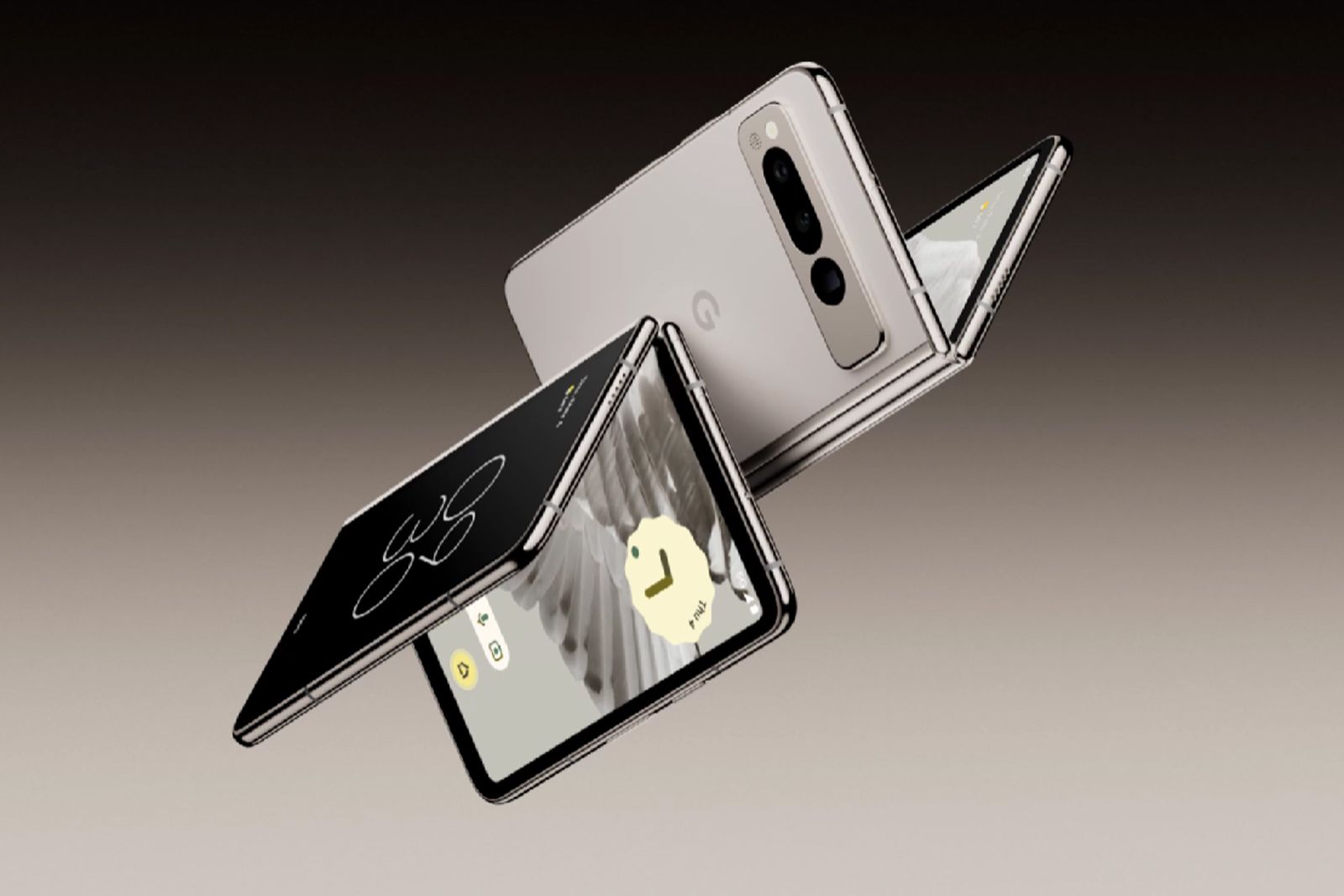
Verdict
The Pixel Fold takes Google’s range of phones into a different format, embracing a folding display for the first time and offering Android on a larger display. There’s plenty of quality in this phone and it looks and feels like the $1800 phone that it is. It’s a slight departure to the affordable flagship phones that Google has offered in the past and for many that will be a cost that’s hard to swallow – but it’s only has expensive as Samsung’s folding phone.
There are clear highlights: the displays are glorious and the camera is superb, offering a range of new opportunities for Pixel users. There’s plenty of power from the Google hardware onboard and the performance of this phone is great. The battery life is just about good enough, but the charging rates aren’t really competitive anymore. The thing that’s impressed me the most about the Pixel Fold is how well the external display works, because it’s just like having a compact smartphone in your pocket – and that’s not the case with the Galaxy Z Fold.
But the software experience isn’t there yet. The number of apps that don’t make good use of the main display detracts from the experience: having black bars down the side on an $1800 phone just seem flawed to me and being able to tap to move them to one side or the other just seems like an admission that these apps don’t offer an experience that’s good enough. In reality, they don’t make use of that large display and it’s a reflection that the app ecosystem isn’t mature enough – yet. I’m sure the Pixel Fold will get better with time – and that will make it an easier recommendation.
Trending Products

Cooler Master MasterBox Q300L Micro-ATX Tower with Magnetic Design Dust Filter, Transparent Acrylic Side Panel, Adjustable I/O & Fully Ventilated Airflow, Black (MCB-Q300L-KANN-S00)

ASUS TUF Gaming GT301 ZAKU II Edition ATX mid-Tower Compact case with Tempered Glass Side Panel, Honeycomb Front Panel, 120mm Aura Addressable RGB Fan, Headphone Hanger,360mm Radiator, Gundam Edition

ASUS TUF Gaming GT501 Mid-Tower Computer Case for up to EATX Motherboards with USB 3.0 Front Panel Cases GT501/GRY/WITH Handle

be quiet! Pure Base 500DX ATX Mid Tower PC case | ARGB | 3 Pre-Installed Pure Wings 2 Fans | Tempered Glass Window | Black | BGW37

ASUS ROG Strix Helios GX601 White Edition RGB Mid-Tower Computer Case for ATX/EATX Motherboards with tempered glass, aluminum frame, GPU braces, 420mm radiator support and Aura Sync


